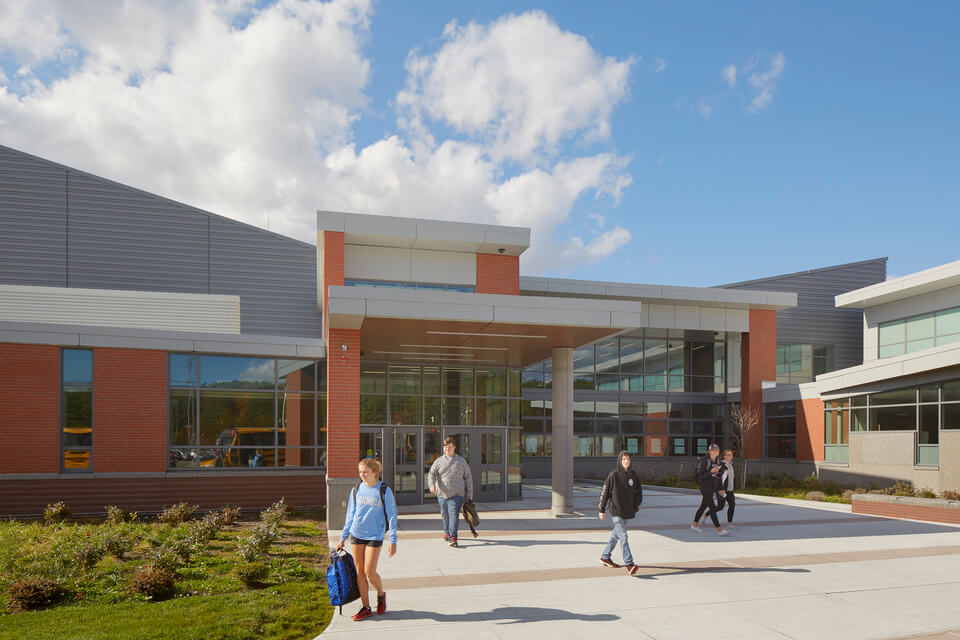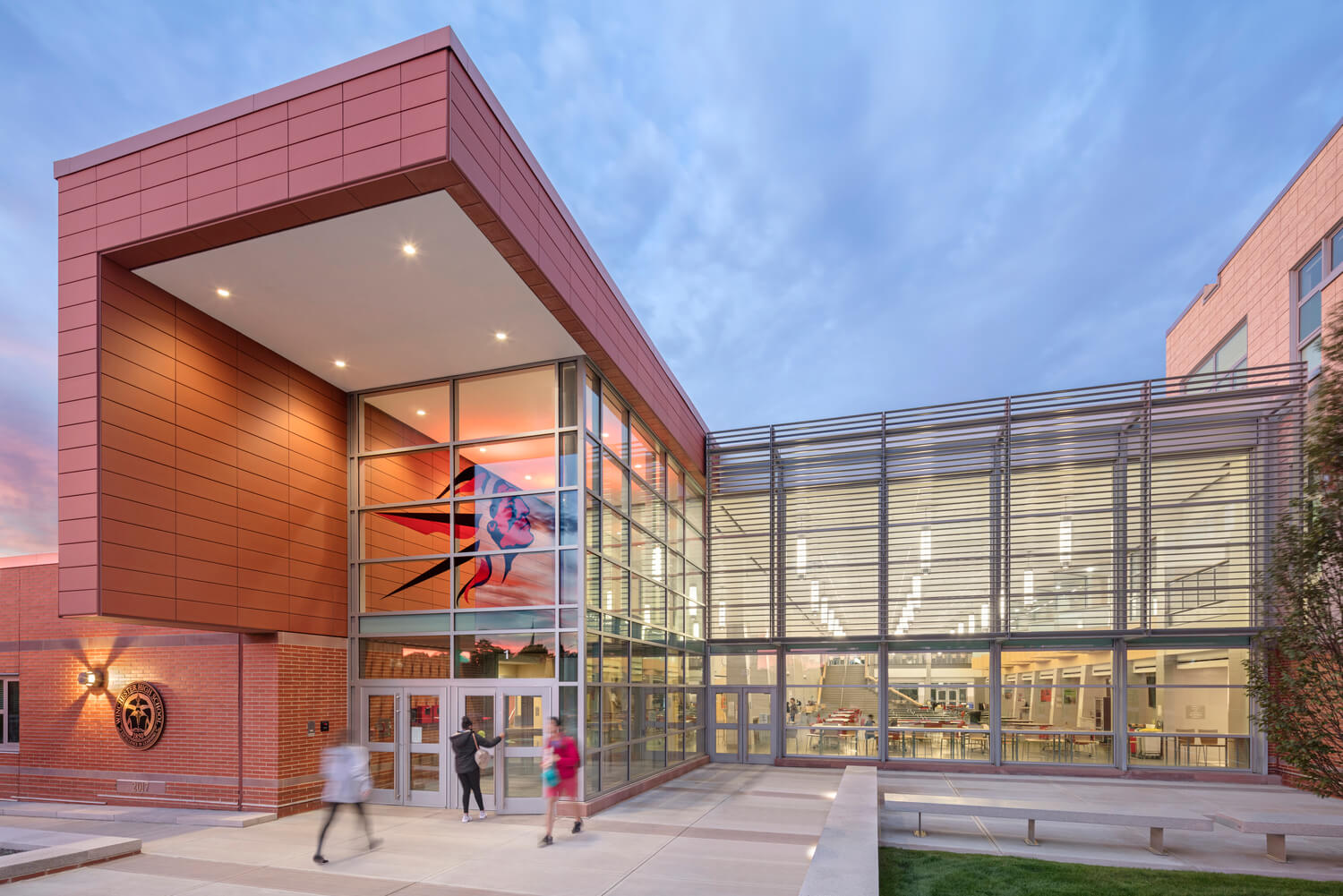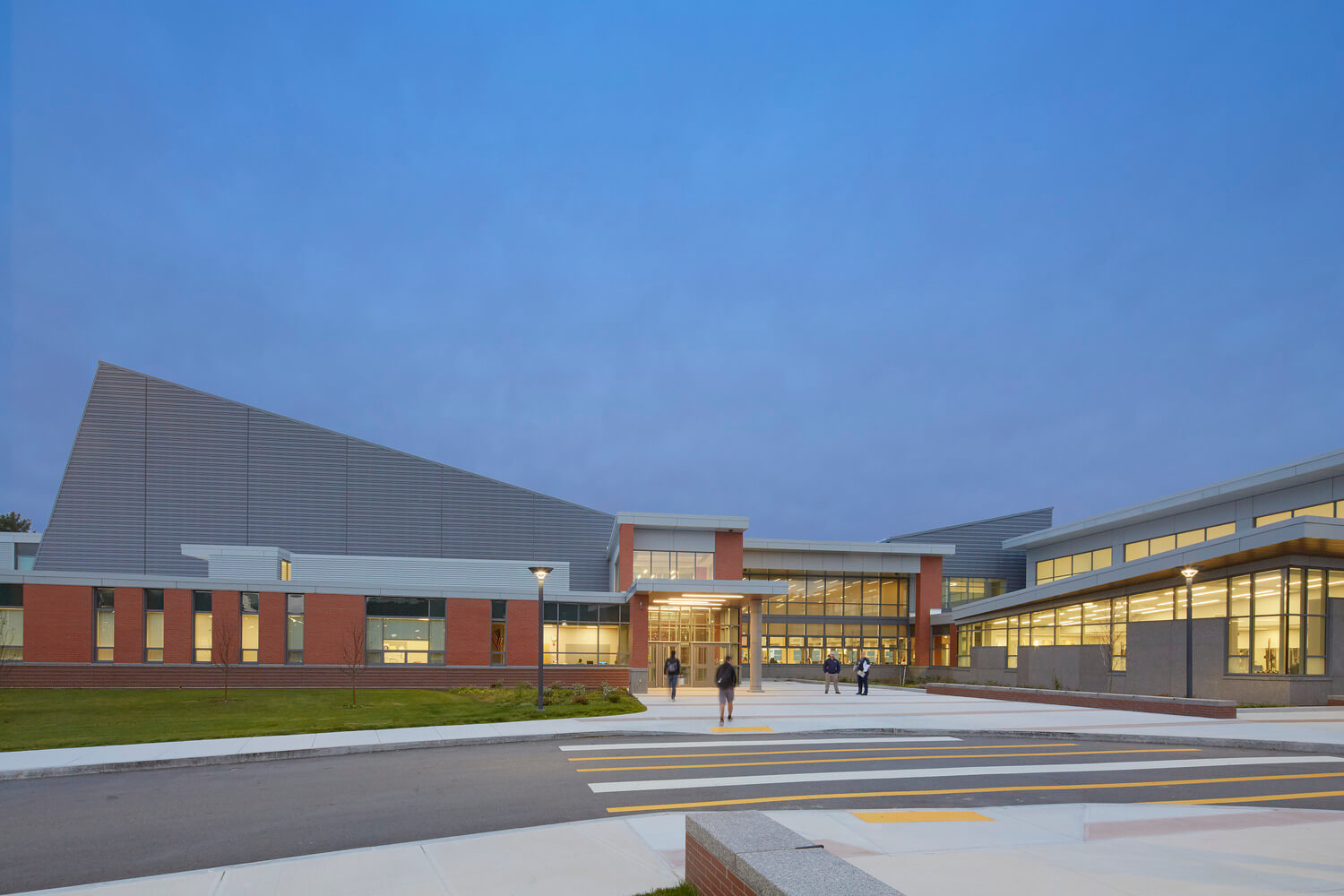
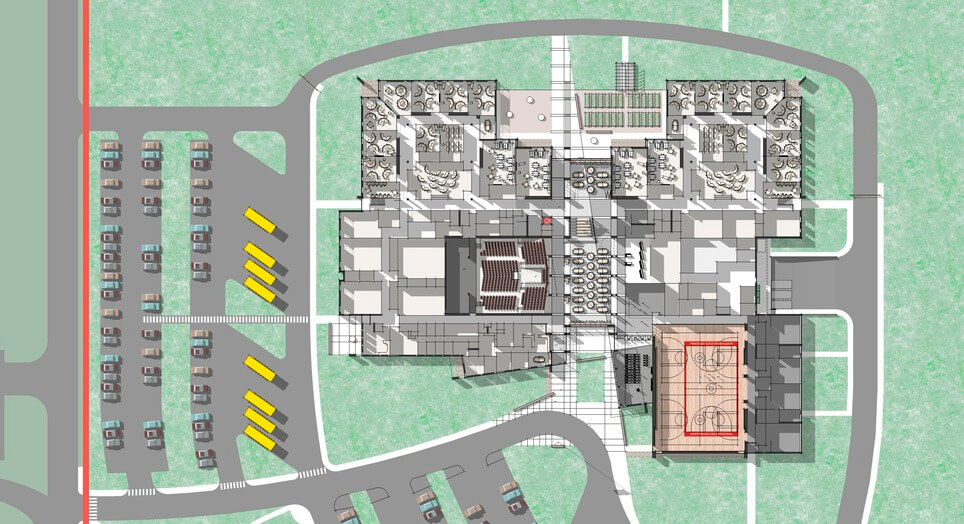
The new NMRHS features flexible learning environments organized into two interdisciplinary pods.
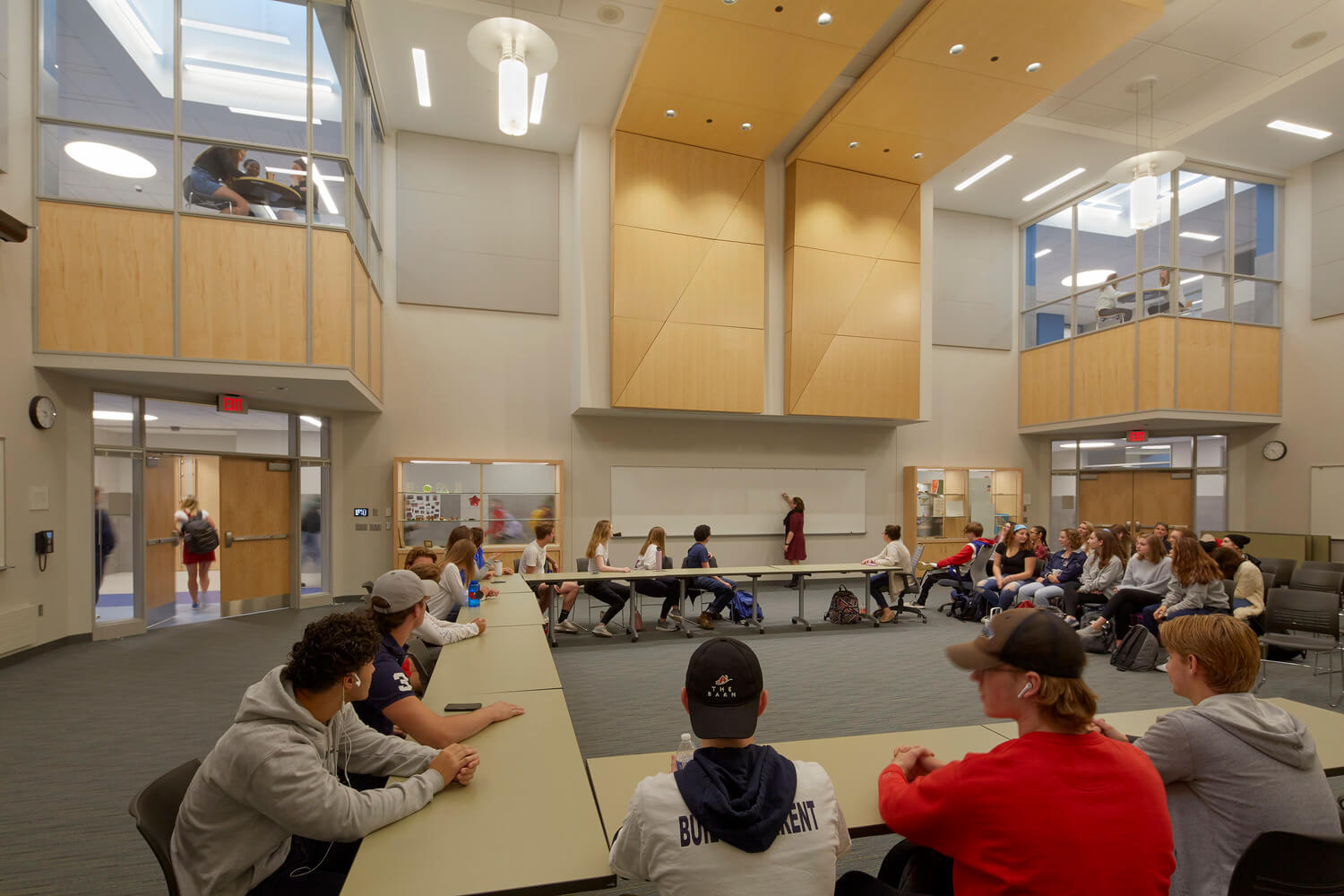
Each pod boasts classrooms, large group areas, and transformable STEAM spaces to foster collaboration and knowledge sharing across disciplines.
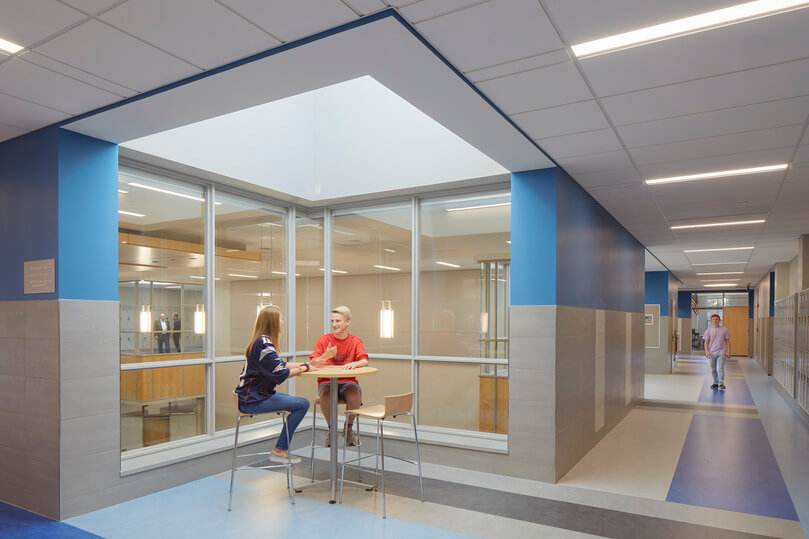
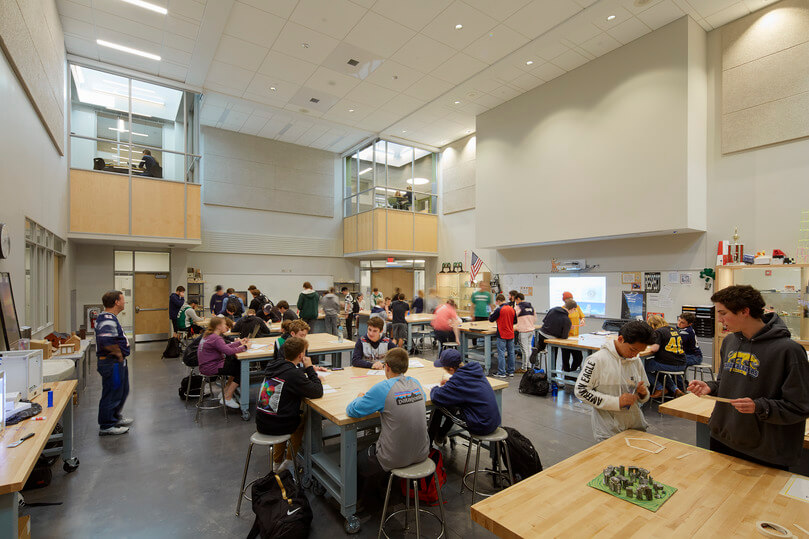
The state-of-the-art makerspace serves not only STEM programs but also robotics, fabrication, and a TV studio.
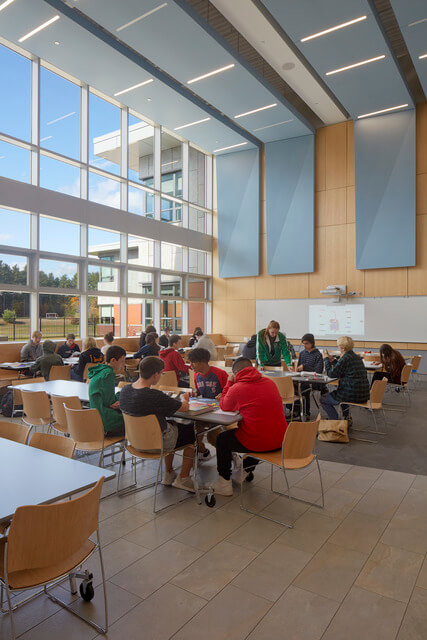
Specialty rooms with oversized windows and mobile displays further blur the lines between traditional classrooms and collaborative spaces.

Interconnected spaces on the first floor form the heart of the school.
The dining commons can transform into an additional learning space, a quiet dining area, or a haven for students seeking a calmer environment.
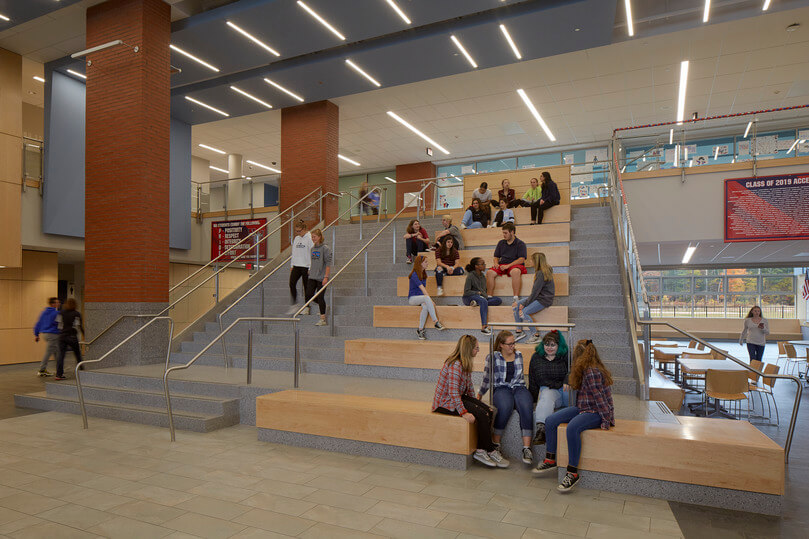
The gymnasium, auditorium, and dining commons are linked by a central learning forum, cafe, and open staircase, encouraging interaction and community building.
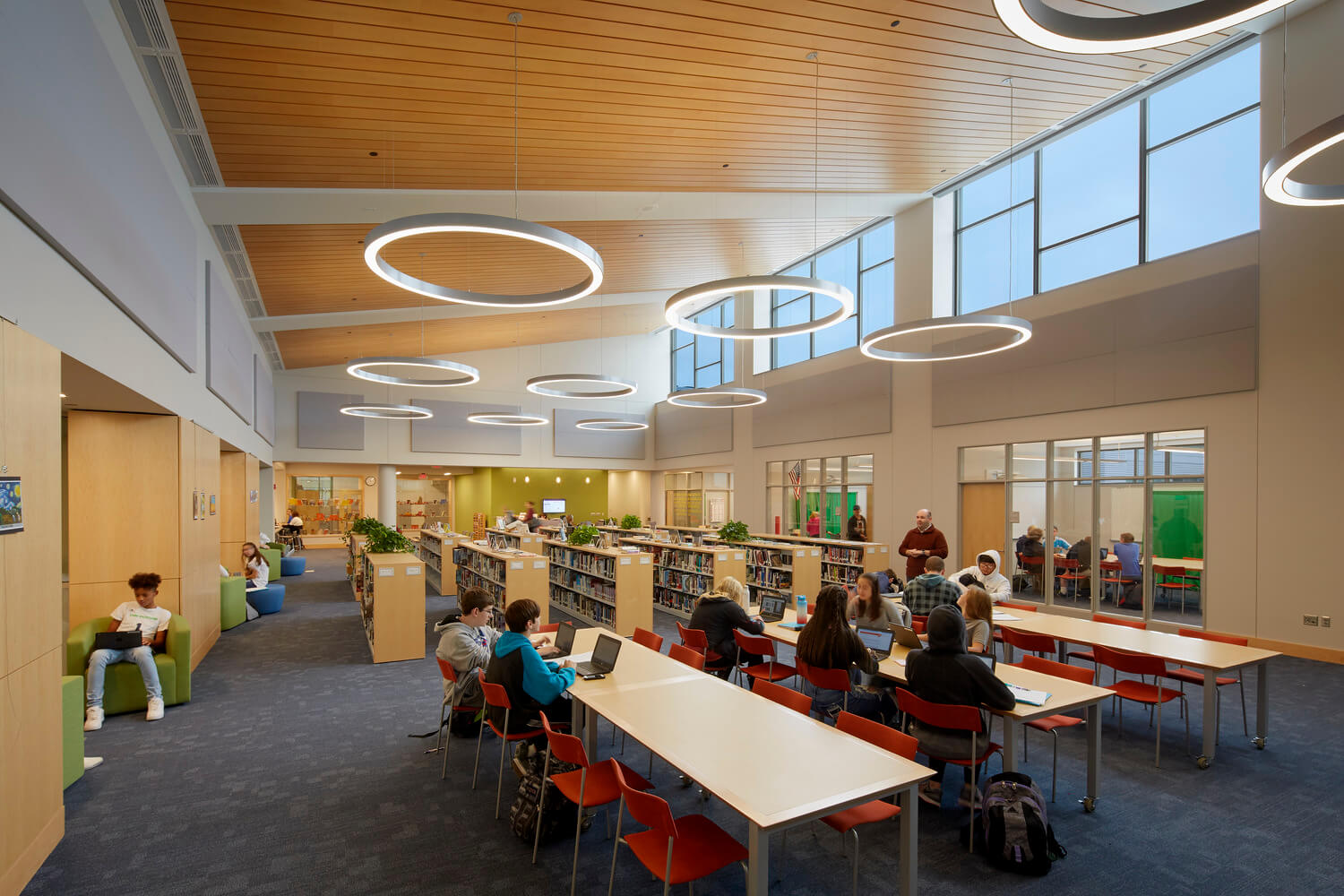
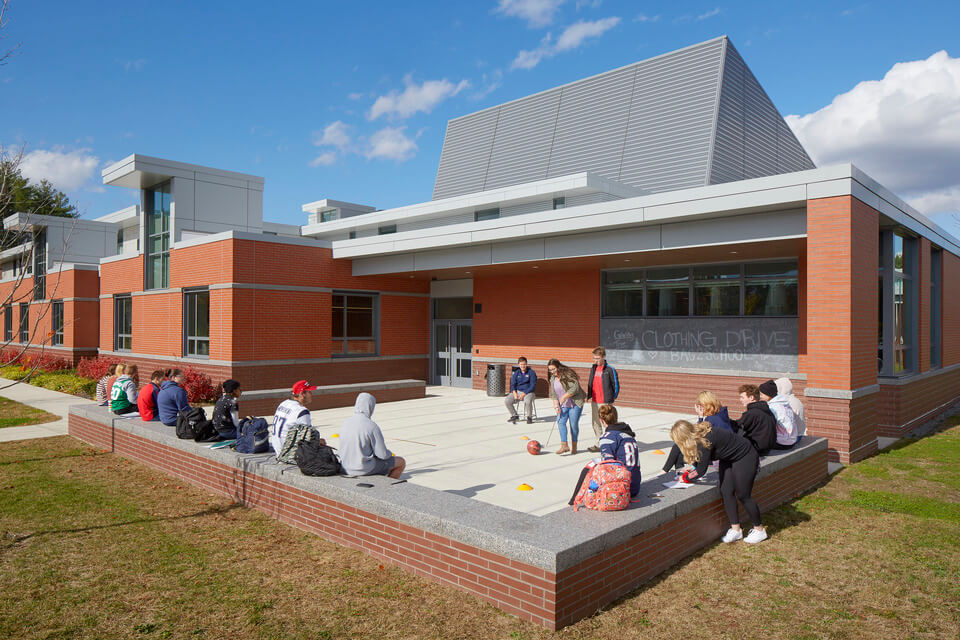
NMRHS is rooted in an active farming community, with local families having a strong affinity with the outdoors.
The design meets this need with five outdoor classrooms that extend the learning environment beyond the building walls.
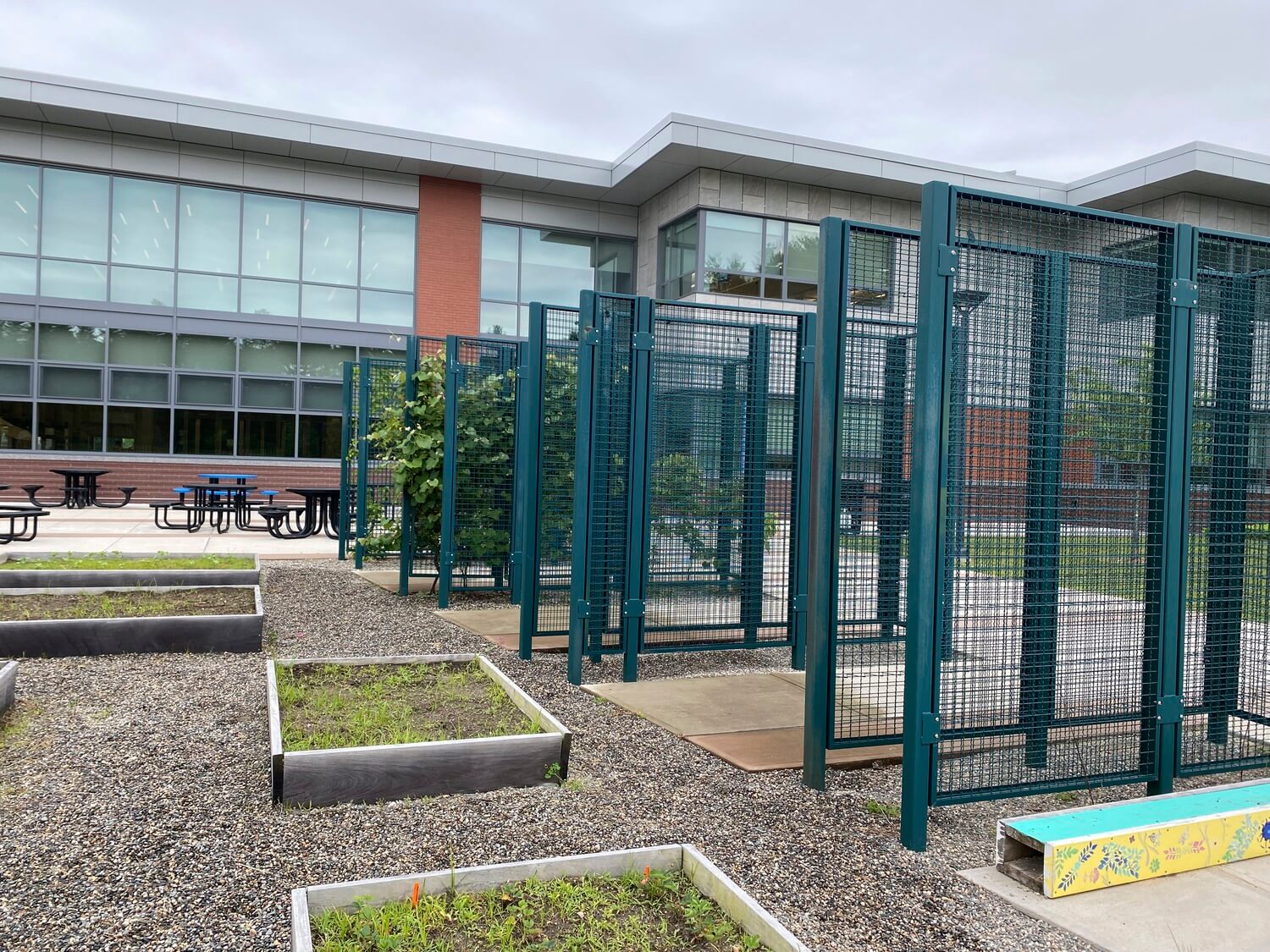
In the school’s community garden and greenhouse, students can grow food to be donated to the local community.
The new school is LEED Gold certified.
This was achieved in part through SMMA’s expertise in sustainable design. But it was ultimately made possible thanks to the enthusiasm of locals who, from the start, helped us form a consensus on achieving ambitious sustainable design targets.
29.9%
Carbon Reduction
2.9
Years
Payback
42.8
kBu/sf
EUI
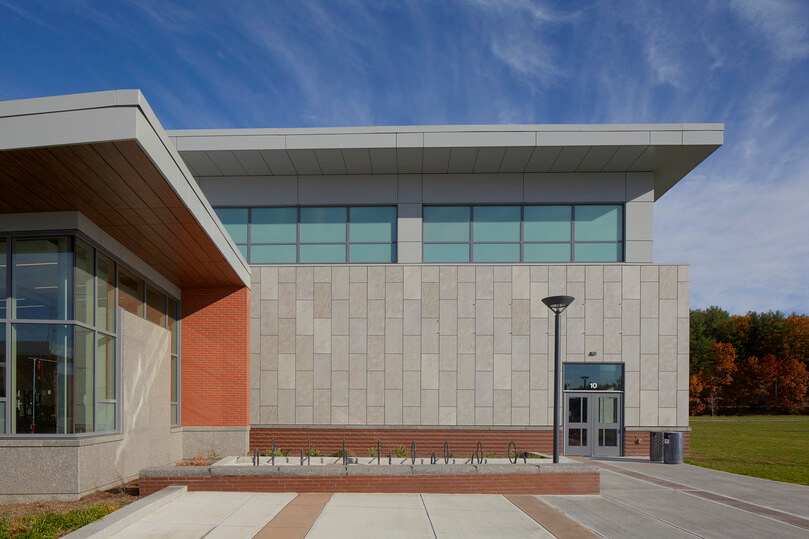
High-quality materials like granite and porcelain reflect the local long-term investment in the school.
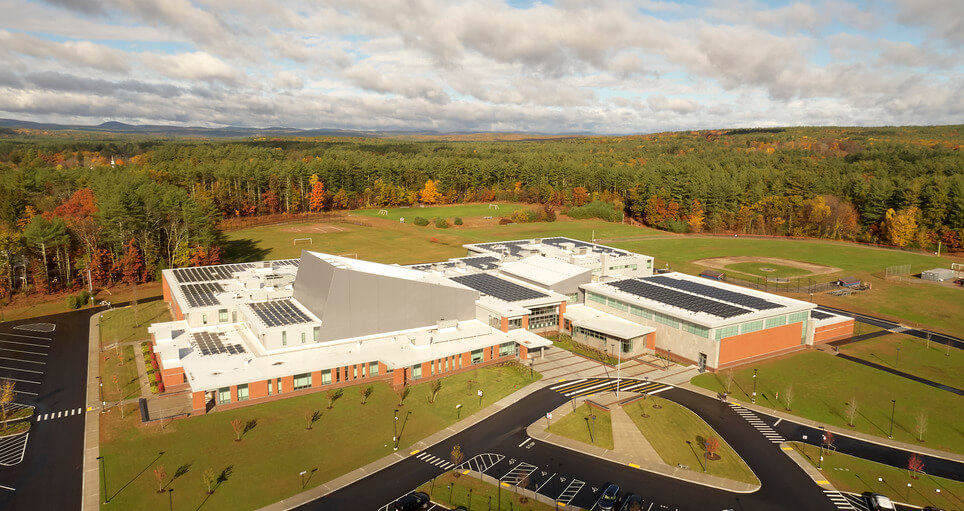
A continuous plinth of darker, textured brick and a granite water table inspired by local stone walls helps situate the building in its rural landscape.
“The first time we let students into the new high school was to plant flowers for opening day. One of my favorite remarks was by a student who said, ‘I knew we were getting a new building, but I didn’t think we were getting this.’ It was so inviting to students and now there are students staying after school in the commons area to do their homework. It’s a beautiful building.”
Joan Landers, former Superintendent
